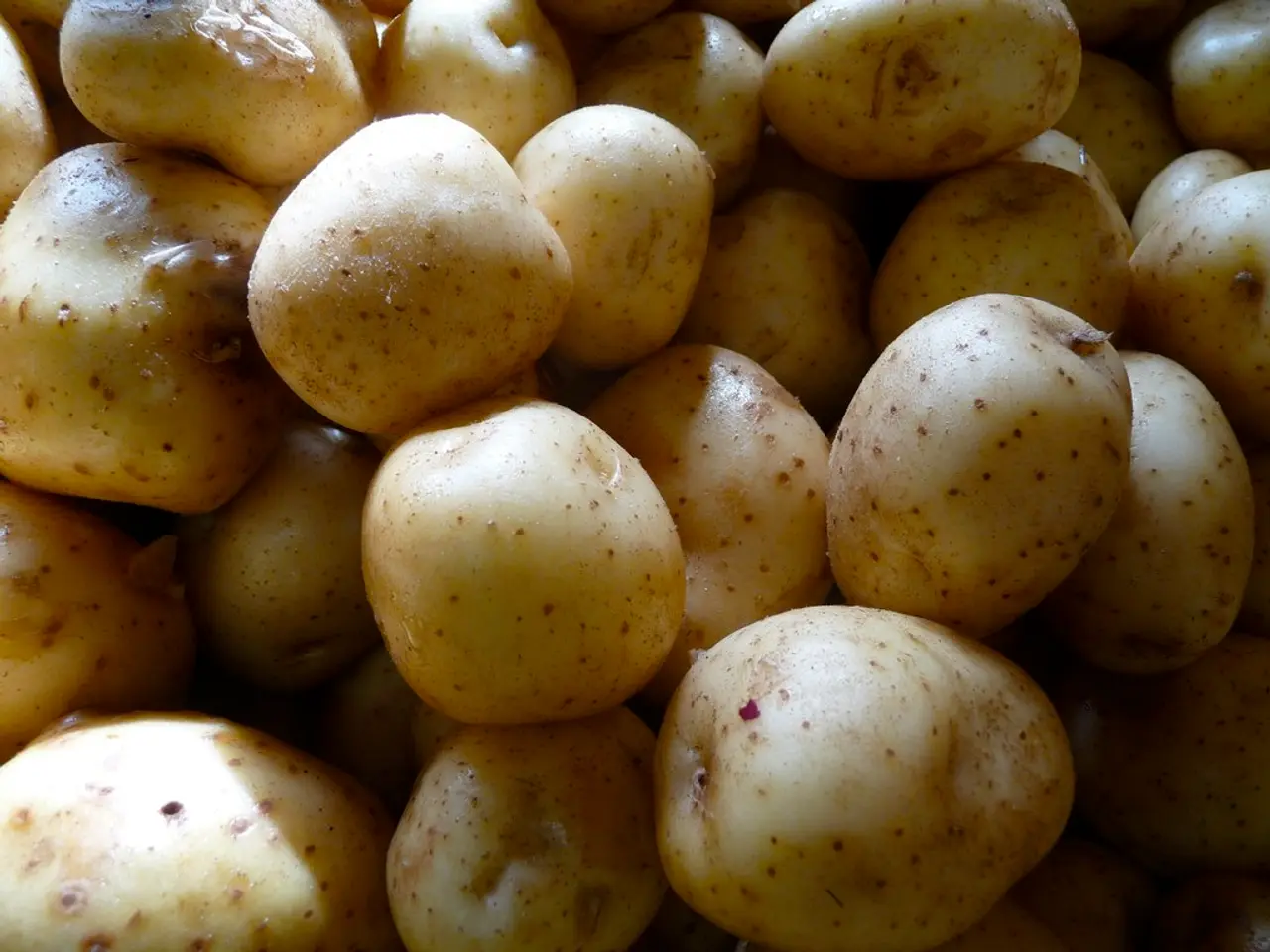Are our potatoes and tomatoes under threat?
Late blight, a destructive fungal disease affecting potatoes and tomatoes, remains a significant concern for growers worldwide, particularly in regions with high air humidity and dense plant populations. The pathogen, *Phytophthora infestans*, causes the disease, which can spread rapidly under conditions of high moisture and moderate temperatures, leading to brown lesions on leaves and white sporulation underneath, ultimately resulting in significant crop losses.
In the summer of 2025, the threat of late blight is particularly pronounced. In the UK, the 2025 Fight Against Blight (FAB) campaign is actively monitoring outbreaks, facilitating rapid reporting and pathogen identification through a network of agronomists and growers. Over 1,500 samples are collected nationwide, with real-time blight risk forecasts and fungicide sensitivity tests supporting control efforts.
Meanwhile, in Ontario, Canada, late blight spores have been detected in multiple areas, including Harrow, Port Lambton, and Simcoe. The increased humidity and precipitation in the region have led to a high risk for outbreaks. Growers are urged to monitor crops closely and apply fungicides specifically targeting late blight if detected.
In Maine, USA, spores have been detected in potato-growing Aroostook County, despite no confirmed infections. Recent weather patterns of high heat followed by cool, wet conditions create a favorable environment for disease development. Extension services recommend starting fungicide sprays on a strict schedule to prevent infection.
Given the high inoculum presence and conducive weather conditions in many potato- and tomato-growing regions, late blight outbreaks are likely to occur or intensify during the growing season. The disease's capacity to spread rapidly between fields, especially from untreated backyard or community gardens, heightens the risk for widespread crop damage.
Without vigilant monitoring and management, late blight can cause severe losses, wiping out crops quickly as it infects leaves, stems, and tubers. The disease remains the most destructive fungus for these crops due to its fast development under humid conditions.
Continuous improvement in disease surveillance, reporting networks, and fungicide strategies are crucial to mitigating the impact. However, increased humidity and dense planting patterns associated with some modern agricultural practices may continue to facilitate late blight epidemics unless management adapts accordingly.
It is essential to remember that not only potatoes and tomatoes are at risk, but eggplants and bell peppers are also not safe from late blight infection. In dry years like 2022, there is significantly less infestation of late blight.
In Germany, where late blight results in "significant yield losses," control measures are showing an effect. The disease is combated through the use of fungicides, growing resistant varieties, maintaining a four-year crop rotation, and adjusting planting and harvesting times. However, agricultural engineer Bernhard Bundschuh is convinced that combating late blight is becoming more difficult.
Experts warn that late blight must not be underestimated, as resistances to fungicides are developing, making them less effective. Affected potatoes have gray or violet-brown spots on the outside, and unsightly discolorations under the skin, potatoes become slimy and decompose. Affected tomatoes are inedible, with leaves curling up and dying.
The potato and tuber blight is one of the most widespread plant diseases worldwide, occurring mainly in humid, warm regions. Various strains of late blight are causing problems nationwide in Germany. Small epidemics of late blight often originate from home gardens where tomatoes are grown without overhead protection.
Experts from the Agricultural Center Augustenberg (LTZ) in Karlsruhe emphasize that long-term control of the disease requires a combination of different approaches. Regions with high air humidity and dense plant populations are particularly at risk between June and August.
In conclusion, late blight currently poses a high risk to potato and tomato production in humidity-prone regions globally, and given favorable environmental conditions and pathogen presence, further outbreaks and significant crop losses are expected without proactive control measures.
In light of the increasing risk of late blight, economic and social policy should prioritize funding for disease surveillance, reporting networks, and fungicide strategies to mitigate the impact. Furthermore, health-and-wellness and lifestyle initiatives could include education on responsible food-and-drink consumption, highlighting the importance of buying locally grown, disease-free produce in the fight against late blight.




